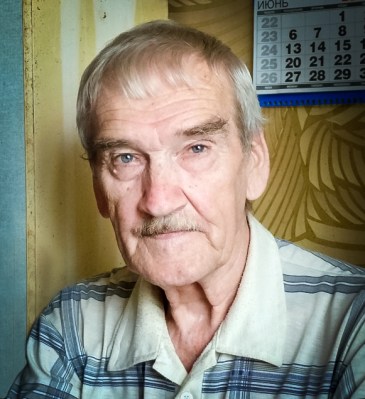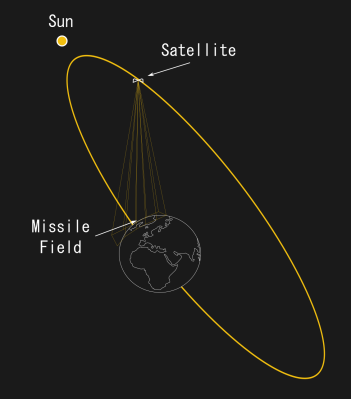

The False Alarm That Nearly Sparked Nuclear War
source link: https://hackaday.com/2021/04/16/the-false-alarm-that-nearly-sparked-nuclear-war/
Go to the source link to view the article. You can view the picture content, updated content and better typesetting reading experience. If the link is broken, please click the button below to view the snapshot at that time.

The False Alarm That Nearly Sparked Nuclear War
The date was September 26, 1983. A lieutenant colonel in the Soviet Air Defence Forces sat at his command station in Serpukhov-15 as sirens blared, indicating nuclear missiles had been launched from the United States. As you may have surmised by the fact you’re reading this in 2021, no missiles were fired by either side in the Cold War that day. Credit for this goes to Stanislav Petrov, who made the judgement call that the reports were a false alarm, preventing an all-out nuclear war between the two world powers. Today, we’ll look at what caused the false alarm, and why Petrov was able to correctly surmise that what he was seeing was an illusion.
Detecting Missiles By Infrared
 Stanislav Petrov pictured at his home in 2016.
Stanislav Petrov pictured at his home in 2016.Petrov was in charge of monitoring the Oko early warning satellite network, which consisted of a series of satellites in highly elliptical Molniya orbits. This orbit was cleverly chosen by Soviet scientists to allow the Oko satellites to have a grazing view of the continental United States, which presented the biggest threat of intercontinental ballistic missile (ICBM) attack at the time. By glancing across the Earth’s edge with their infrared sensors, rather than gazing down upon it, the infrared energy from hot missile exhaust could easily be spotted against the cold background of space, rather than the Earth’s surface. The aim was to cut down on false positives from phenomena such as wildfires and oil rig burnoffs, while also providing good coverage without requiring a large number of satellites.
On that fateful night in September, however, the unique orbit of the Soviet satellite was to cause a major problem. The Oko system raised an alarm shortly after midnight, indicating that a single missile had been launched from the United States. As the sirens were going off around him, Petrov almost froze. The political climate at the time was fraught, with all-out nuclear war a constant threat.
The siren howled, but I just sat there for a few seconds, staring at the big, back-lit, red screen with the word ‘launch’ on it.
The initial alarm was followed by further alerts, showing five missiles in total. Despite the indications that all hell was about to break loose, Petrov didn’t immediately pass the alert up the chain of command.
Is This Thing Broken?
With only minutes to react to a strike, time was of the essence, but things didn’t add up. Starting a nuclear war with just five missiles didn’t strike Petrov as a believable strategy, and satellite radar operators were unable to report detecting any launches. The Oko satellites were also new and relatively untested thus far. Thus, rather than report that a nuclear strike on the USSR was underway, Petrov elected to go with his hunch and report that the system was malfunctioning.
Twenty-three minutes later I realised that nothing had happened. If there had been a real strike, then I would already know about it. It was such a relief.
 A diagram indicating the rough relative positions of the sun, the Oko satellite, and and the US missile field it was tasked with monitoring.
A diagram indicating the rough relative positions of the sun, the Oko satellite, and and the US missile field it was tasked with monitoring.Petrov’s gut feeling turned out to be on the money, and the dogs of war were kept on a leash that evening. It was indeed a false alarm, rather than American missiles, that had caused the warning. The date of the incident happened to be right around the autumn equinox. Due to the position of the sun and some high-altitude clouds, sunlight was reflected onto the satellite’s infrared sensors, triggering the satellite to report multiple missile launches. The incident led to the Soviet Union creating a complementary geostationary satellite system in order to corroborate any indications of missile launches from the USA.
Stanislav Petrov was never rewarded, or particularly admonished for his decision. Eventually, he was demoted on a technicality for not filling out his diary while tangling with the agonising decision as to whether the Earth should burn in nuclear fire on that cold September night. He lived out the rest of his life in Russia, passing away at the age of 77 in 2017.
Disaster was thus averted by Petrov’s actions; in the hair-trigger military environment of the time, it’s likely that USSR officials warned of incoming US missiles likely would have given the order to launch, causing untold devastation. Instead, we’re left with a great story and an even more poignant lesson. Redundancy is always key in systems that deal with matters of life or death, and it’s even more polite to ensure that when said lives (or deaths) can be measured in the millions or billions. That, and that sometimes you’ve got to err on the side of caution, particularly when nuclear war is involved.
Recommend
About Joyk
Aggregate valuable and interesting links.
Joyk means Joy of geeK